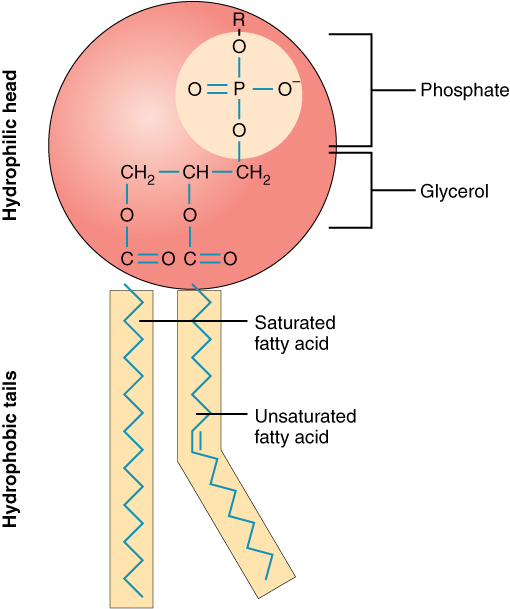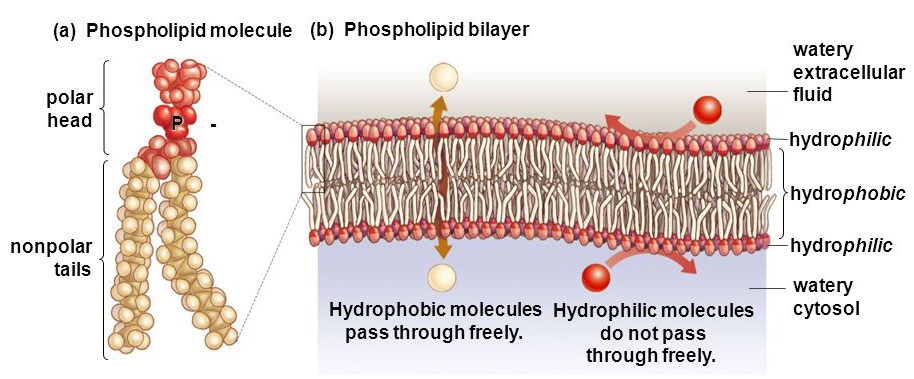What is passive diffusion and how does it work?
1 Answer
Passive diffusion is the movement of molecules along their electrochemical gradient(from higher to lower) across the cell membrane which doesn't require energy.
Explanation:
It is the most simplest type of transport and is commonly known as simple diffusion.
First of all we have to take a look at the structure of plasma membrane or Cell Membrane in order to grasp concept of passive diffusion:
Plasma membrane is lipidbilayer with embedded proteins. In case of passive diffusion we are concerned only with the lipid bilayer which is made up of many phospholipid molecules. Each phospholipid molecule contains two parts:
-
Polar & hydrophilic
("water-loving") head :
It is made up of negatively-charged phosphate group(PO_4^(3-)) and glycerol(C_3H_8O_3) molecule. One of the oxygen of phosphate group is attached to variant i.e"R" . Thus the nature of phospholipid can vary with the nature of"R" . Glycerol is sort of bridge between phosphate group and hydrophobic tails. That's why it's known as glycerol backbone. -
Non-polar & hydrophobic
("water-fearing") tails : Phospholipid molecule consists of 2 hydrophobic tails made up of fatty acids. The fatty acids chain consist of carbon atom bonded with hydrogen atoms. One tail is made up of saturated fatty acids and the other containing double bond is made up of unsaturated fatty acids. Both these tails get attached to the glycerol molecule of hydrophilic head.
Thus overall structure of phospholipid is constructed as:
 https://commons.wikimedia.org/wiki/File:0301_Phospholipid
https://commons.wikimedia.org/wiki/File:0301_Phospholipid
Now when the hydrophobic(water-fearing) and non-polar molecules want to move from an area where they are in higher concentration to the one with lower concentration then they found no difficulty in crossing this barrier i.e plasma membrane. They simply slide from lipid bilayer and get into the cell. This process is called passive diffusion. The small polar molecules e.g
 http://slideplayer.com/slide/4232026/
http://slideplayer.com/slide/4232026/
But as head is Polar so it allows the ions and polar molecules to pass through it but these can't cross the hydrophobic tails. They then use the membrane proteins to get into the cell.
Hope it helps...

